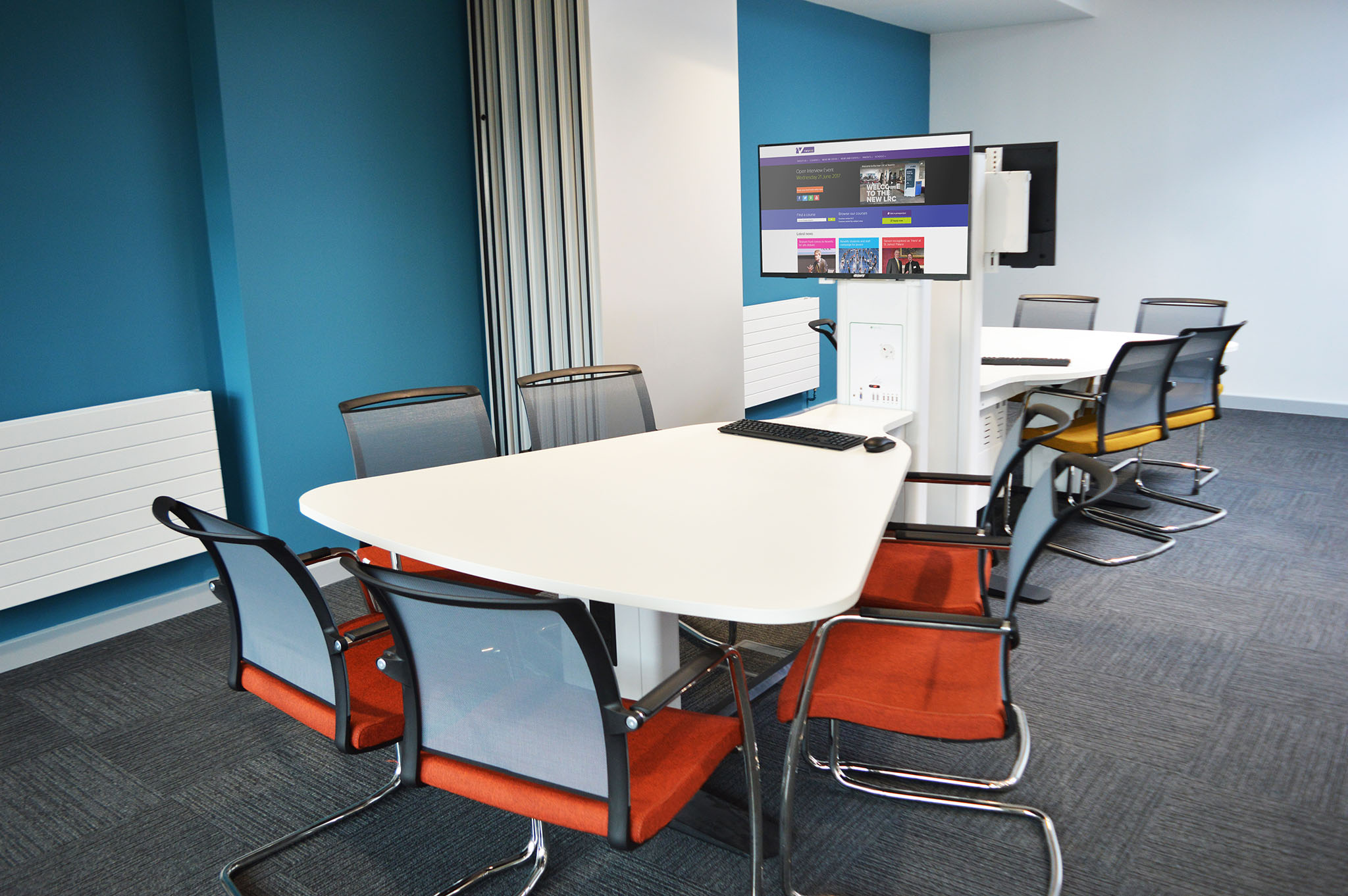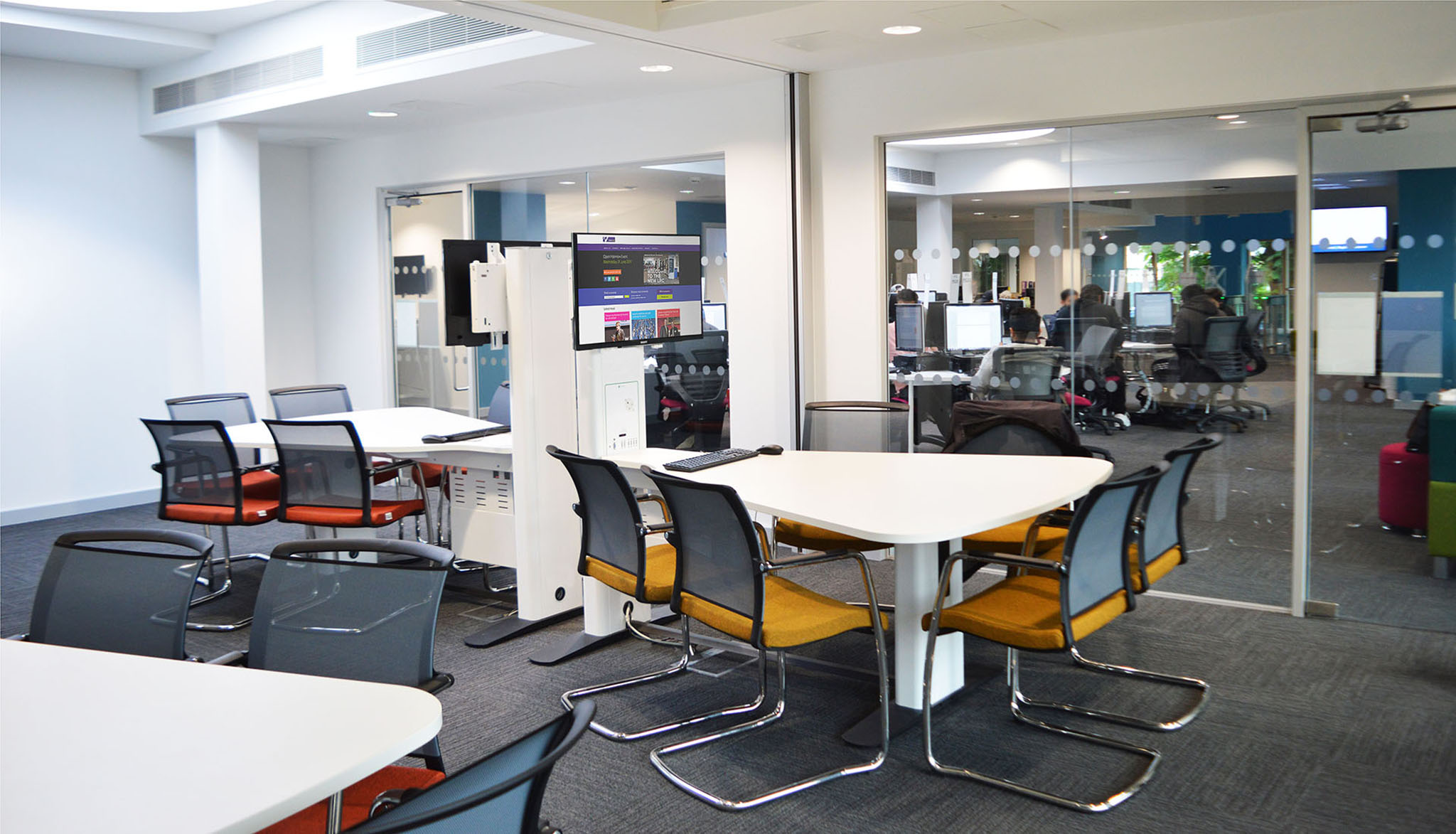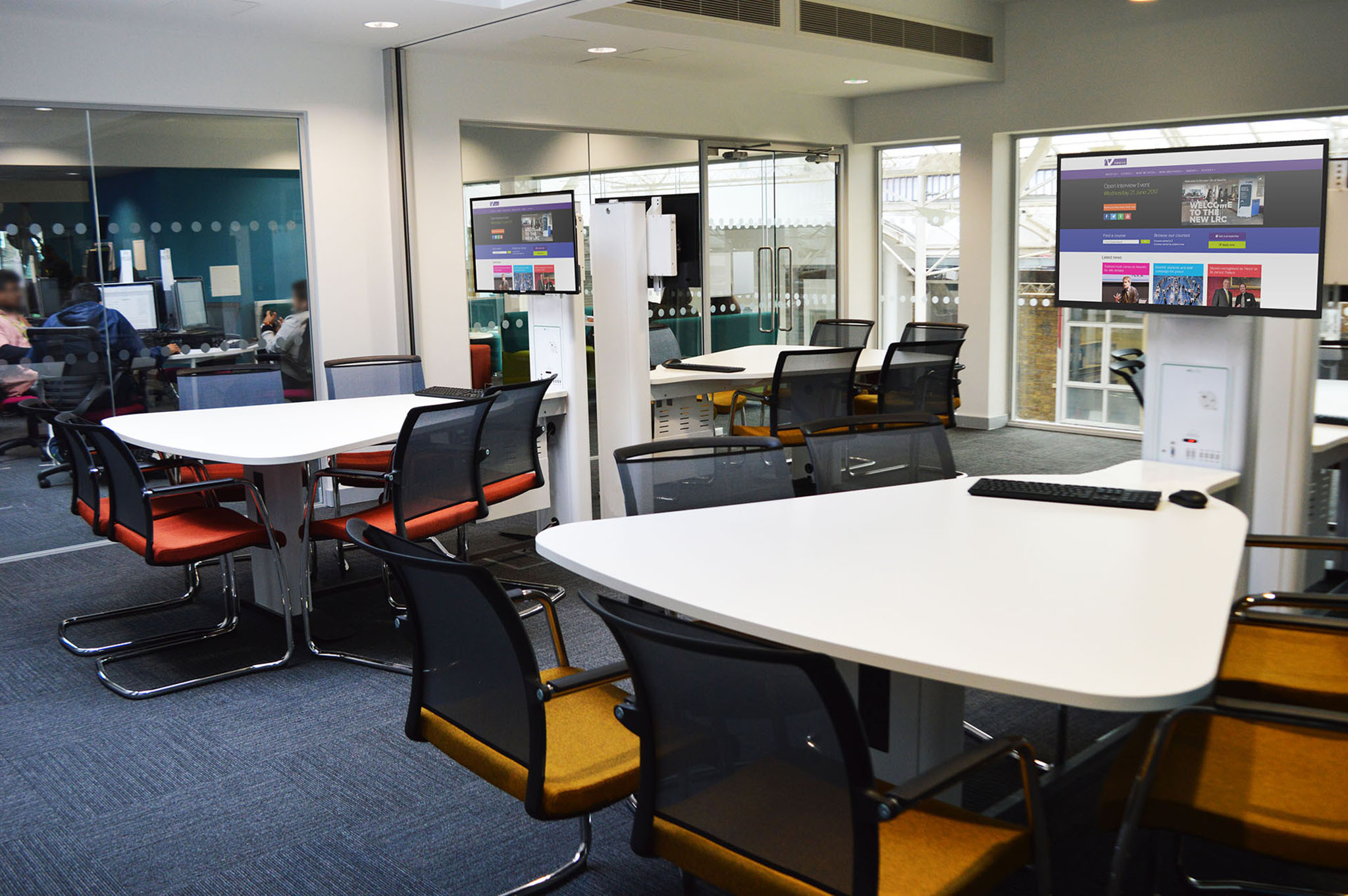Newham Sixth Form College

Background
Located in the heart of east London, Newham Sixth Form College was established in 1992, with the aim of increasing opportunities for post-16 students in Newham and neighbouring boroughs. NewVIc as it is known, provides a very wide range of Vocational and A Level subjects and supports a wide range of learners with additional learning needs.
The Brief
Newham Sixth Form College is currently undergoing a re-development to modernise the campus. The first stage of this re-development was to create a new Learning Resource Centre (LRC) that was more like a university space with a professional feel. The building was designed to inspire and provide a diverse range of study spaces over three floors which included integrated technologies to ensure learners could study in any manner that suited their requirements.
A key focus was the provision of spaces that encouraged and supported the development of collaboration between learners. To achieve this outcome it was necessary to look at the physical spaces, the types of furniture required and the technologies that allowed learners to work in a seamless and engaged manner.
It also had to inspire teachers to look at the opportunities for self-directed and directed learning to identify how they too could engage with the learners and the new spaces.It was recognised that learners are increasingly bringing their own devices to the LRC and that supporting technologies were needed to further encourage and integrate opportunities for this to expand.
The development of softer skills including participation in teamwork, leadership and the creation and evaluation of content were an important part of the brief. The question was how would a building and the contained learning spaces achieve this?

The Solution
Three architects pitched on how they would address the brief to create this type of learning space. Once a choice had been made the LRC Manager (Rod Kain) began the search for furniture and technologies that would enable the vision to be realised.
Key to the success of the LRC was the creation of project spaces where students could work together in a professional manner. During research of similar learning spaces in universities, Rod came across TOP-TEC Synergy collaborative tables which were an interesting shape, were very professional and robust and were also fully configurable to deliver the connectivity required for laptops, PCs and a range of personal devices.
After making contact with TOP-TEC it was agreed that a Plectrum shaped Synergy table that sat six would be provided on loan to see how students engaged with it. The table was placed in a prominent position and just left with no instructions given to them. After a couple of days where curiosity was clearly mounting they asked what it was and if they could use it. They were again given no information except that they could use it and had to explore ways to enhance their learning.
It was an instant hit and quickly became the go-to learning space with students coming in very early to ensure they got the space first. LRC staff just observed and noted uses.
Students observed each other, tried the connections, plugged in different devices, accessed the network, watched and created content online, completed directed learning tasks, ran peer to peer study groups and prepared presentations together. When asked for feedback they said it was amazing, the tables made them feel special, was really professional and helped them engage with each other.
During feedback sessions, students expressed how important it was to integrate Synergy tables into the new LRC. Interestingly the students commented on the ergonomic Plectrum shape of the tables and the way it really helped them to focus and to engage in a more personal way. The shape had engaged everyone with no-one feeling left behind.

Two project rooms were created within the new LRC with each containing two Synergy tables. These are bookable by students and staff and have been incredibly popular during the exam revision period with groups making block bookings over two months to revise.
Teachers are now exploring the opportunities the spaces and tables bring, using them to encourage their students to collaborate more and take responsibility for managing their learning. Teachers describe the learning space with the Synergy tables as their classroom of the future where they are the facilitators and the learners the leaders.


